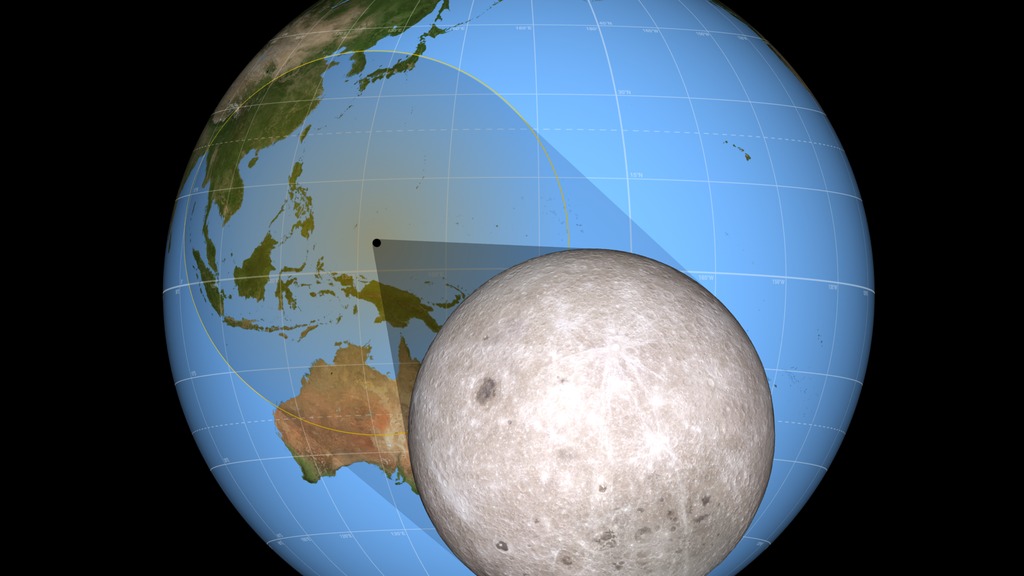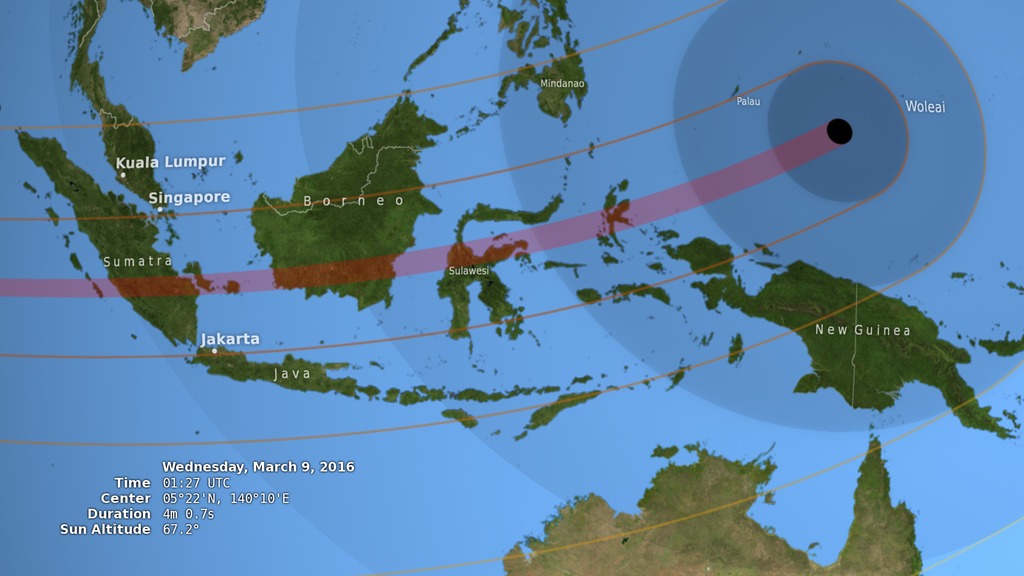Total Solar Eclipse

A rare alignment of the sun and moon casts a shadow on our planet.
On March 8, 2016 (March 9 local time), people in parts of Southeast Asia will have the chance to see a total solar eclipse. A total solar eclipse occurs when the moon passes precisely between Earth and the sun, casting a shadow on part of the Earth’s surface. Such events are a relatively rare occurrence that happens only about once a year because of the fact that the moon and the sun do not orbit in the exact same plane. Skywatchers along the path of the eclipse—which is over 8,800 miles long, but only 97 miles wide at the widest point—will see the moon black out the sun’s bright disk for between one and a half to just over four minutes depending on their location. Some degree of a partial solar eclipse will be visible to people outside this path in Asia and the Pacific, including Hawaii, Guam and parts of Alaska. Watch the video to see an animation that shows the movement of the moon's shadow during the event.
This animation of the March 2016 solar eclipse traces the path of the moon’s shadow on Earth.

Within the moon's inner shadow (black circle), the sun is completely blocked. Within the outer shadow (large circle), the sun is partly blocked.

People within the path of the inner shadow (red line) see a total eclipse. People outside this path will see varying degrees of a partial eclipse.

Yellow and orange lines above map the path of the moon's outer shadow. Percentages indicate the amount of the sun covered by the moon.
For More Information
See NASA.gov
Credits
Please give credit for this item to:
NASA's Goddard Space Flight Center
Cover image courtesy of NASA/GSFC/CI Lab
-
Producer
- Genna Duberstein (USRA)
-
Animators
-
Ernie Wright
(USRA)
- Walt Feimer (HTSI)
-
Ernie Wright
(USRA)
-
Writers
- Sarah Frazier (ADNET Systems, Inc.)
-
Ernie Wright
(USRA)
- None None (NASA Viz Team)
Release date
This page was originally published on Tuesday, March 8, 2016.
This page was last updated on Wednesday, May 3, 2023 at 1:48 PM EDT.

